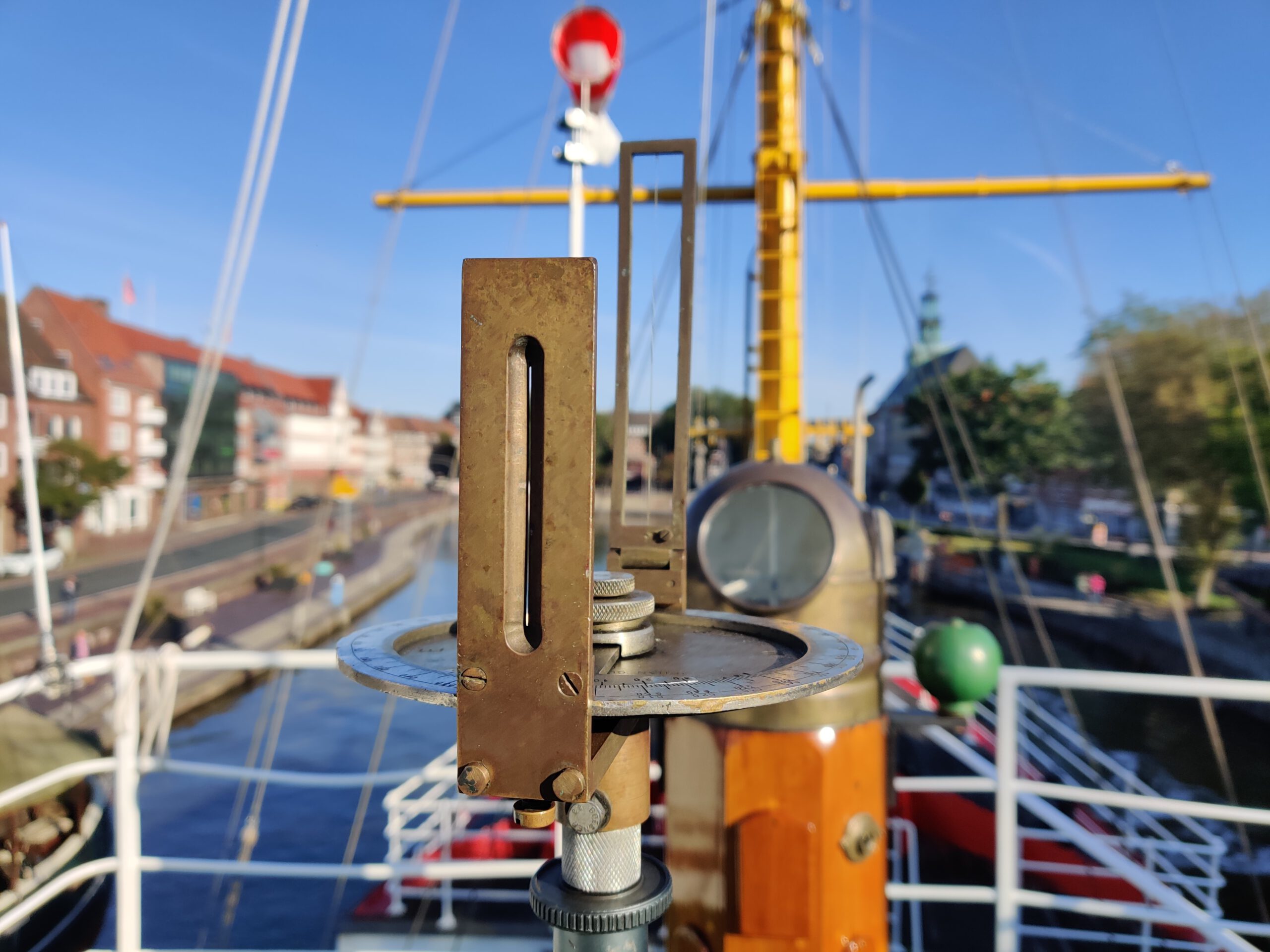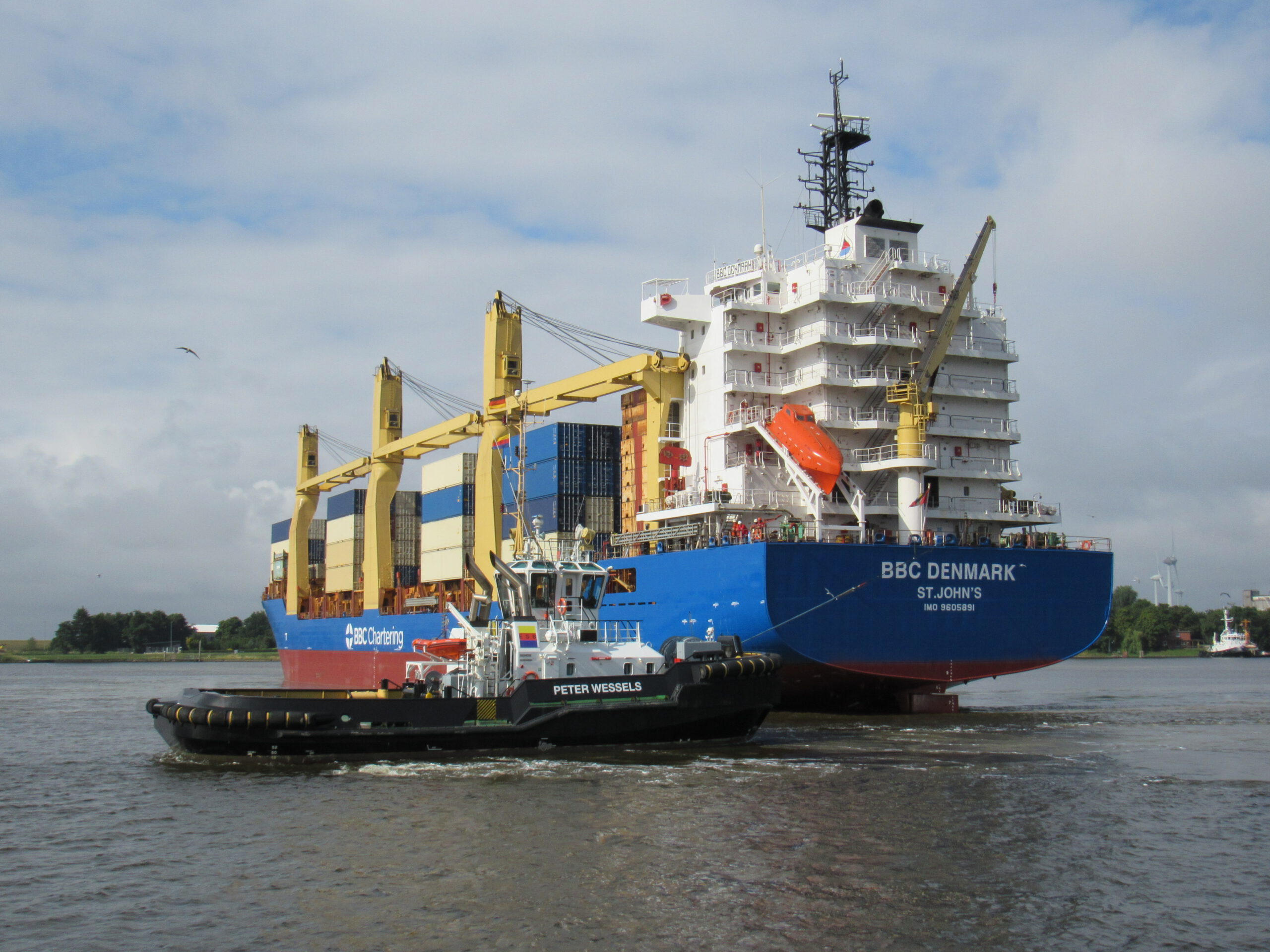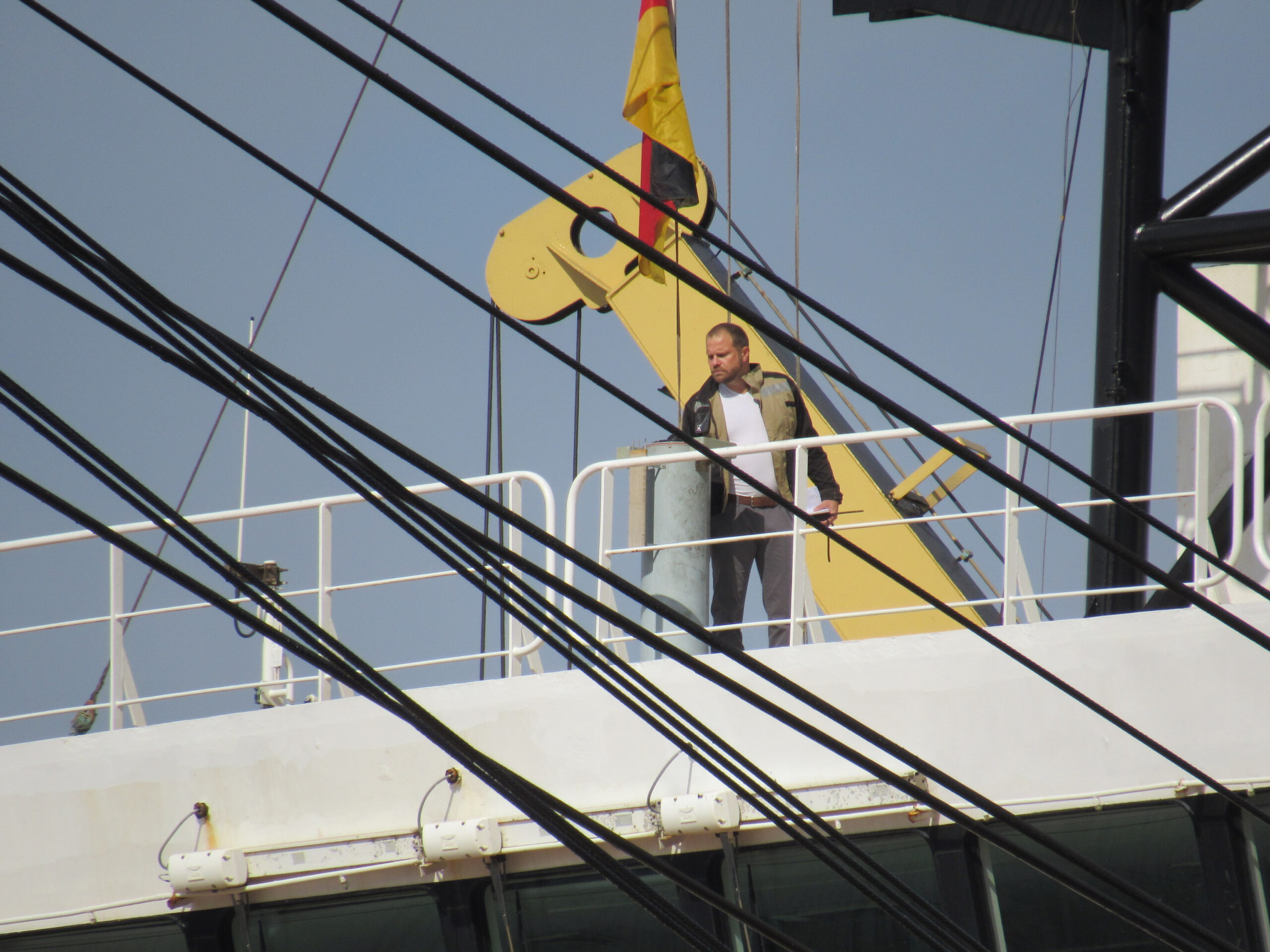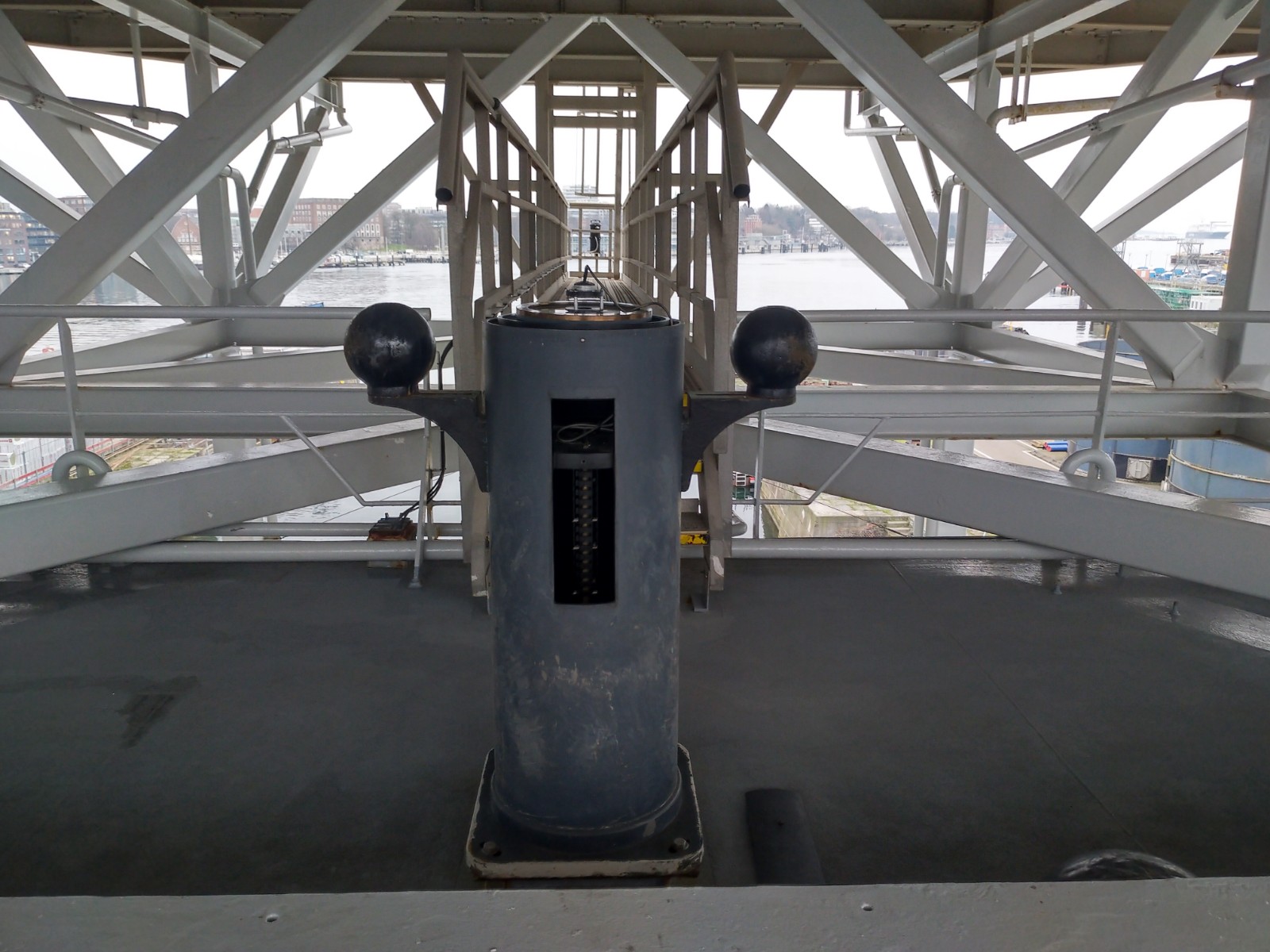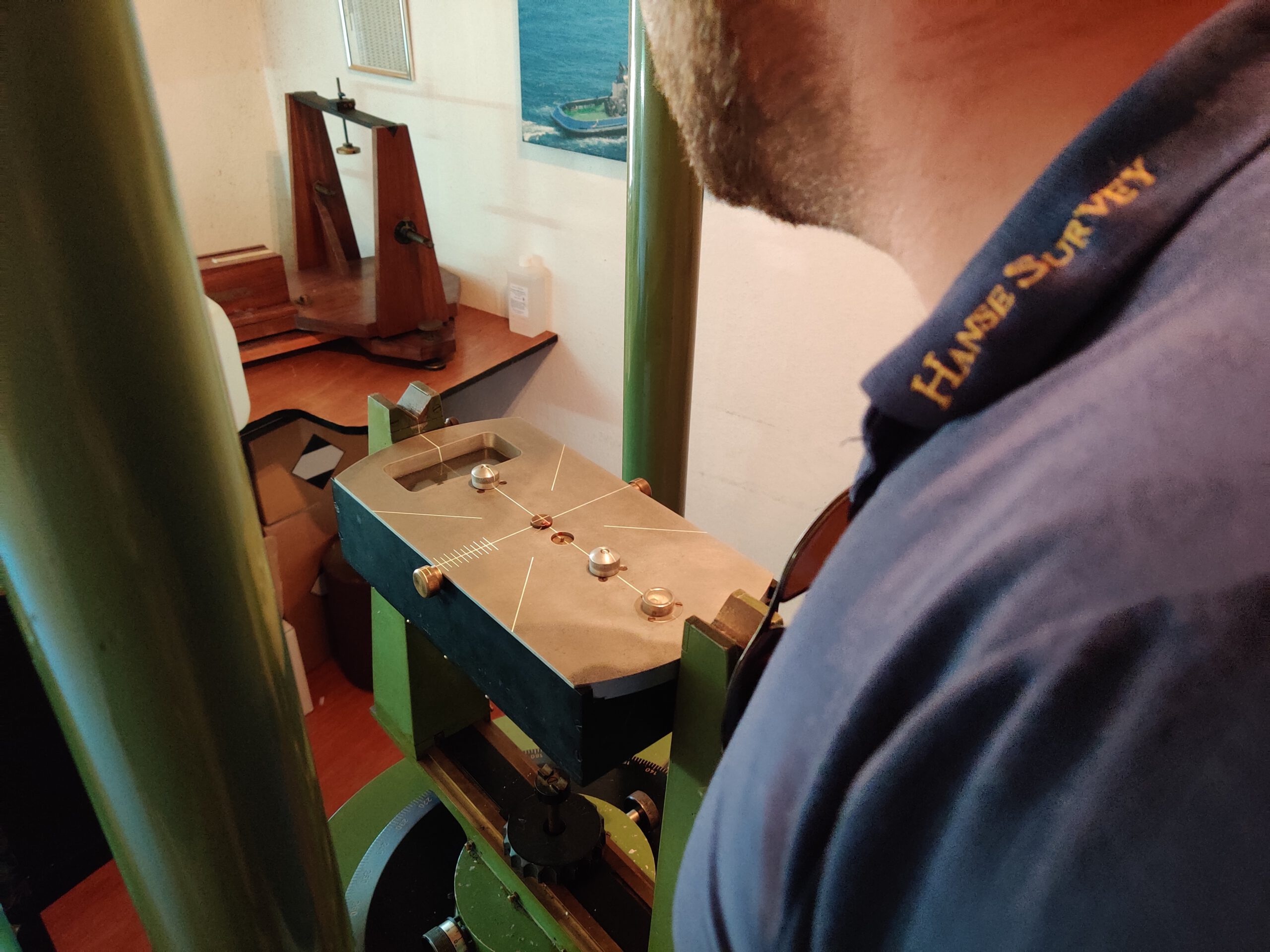Magnetic compass adjustment
Appointed adjuster of the German Federal Maritime and Hydrographic Agency.
As only one of seven members of the Association of German Compass adjusters in Germany and approved by the German Federal Maritime and Hydrographic Agency as a recognised compass adjuster, Hanse Survey will gladly take over the adjustment & compensation of your magnetic compasses on board.
Regular and professional regulation is essential for the safe operation of the vessel, as it ensures that the magnetic compass can be safely used for navigation in the event of a power failure.
How does a magnetic compass work?
A magnetic compass automatically aligns itself to magnetic north due to the earth’s magnetic field. To avoid distortions of the course read, it is important that the compass is not influenced by other magnetic fields. However, this is impossible on a ship, so the magnetic field of the ship is compensated for as far as possible with the help of correction magnets at the compass installation site, with a remaining limited error (deviation) the correct course is displayed. However, the magnetic field generated by the compensating magnets is less complex than the magnetic field of the ship, which is why minor deviations can appear. These minimal deviations are documented, in 10° steps, by our experienced adjuster in a deviation table. Based on the values in the table, it is therefore possible to determine the course that has to be steered.
Example:
True heading: 90°
Deviation according to table: +1°
Mariation (indication from nautical chart): +3° (E)
Magnetic compass heading to steer: 90° – (+3°) – (+1°) = 86°.
How are the deviations determined?
To adjust the compass, the ship must perform two full circles. Our compass adjuster takes a bearing over a prominent fixed object in the vicinity, e.g. a church or a high-rise building. Based on this bearing, the deviation can be determined with the help of the right-pointing bearing to the wrong-pointing bearing.
In this procedure, we follow the generally recognised guidelines and standards.
SOLAS Chapter V Regulation 19 Paragraph 2
Paragraphs 2.1, 2.1.1, 2.1.2, 2.1.3 state that all ships irrespective of size shall have:
A properly adjusted standard magnetic compass, or other means, independent of any power supply, to determine the ships heading and display the reading at the main steering position.
A pelorus or compass bearing device, or other means, independent of any power supply, to take bearings over an arc of the horizon of 360°.
Means of correcting heading and bearings to true at all times.
ISO 25862
G1. General
A properly adjusted compass shall have a residual deviation within 3° in vessels 500 or more gross tonnage and, +/- 4° in vessels below 500 gross tonnage. Accuracies shall be within +/- 2° for safe navigation. A special regulation applies to inland vessels, where the maximum residual deviation may be +/- 6°.
The location of the compass on board the vessel is not insignificant for ensuring reliable operation of the magnetic compass. It is particularly important to ensure that the magnetic free zone around the compass is complied during building and esured during operation.
This is a distance of the magnetic compass to any magnetic materials. This distance should be assumed to be spherical around the compass. Accordingly, A-magnetic steel or other non-magnetic materials should be used within this area.
Furthermore, the distance to electronic devices, also called “magnetic safe distance”, must be taken into account. This distance is indicated on the back of every electronic device used in merchant shipping.
G2. Magnetic compasses should be adjusted when:
- every two years, under German flag (or depending on the interval of the responsible flag state).
- after a dry-docking phase.
- after significant construction measures.
- Magnetic compasses should be adjusted when:
- they are first installed;
- they become unreliable (e.g. after an accident);
- repairs or structural alterations have been made to the ship that could affect its permanent and/or induced magnetism;
- electrical or magnetic equipment close to the compass is added, removed or altered;
- the recorded deviations are excessive, as per the limits defined in G.1, or when the compass shows physical defects; or
- at any other time deemed necessary by the master for the safety of navigation.
G3. Compass adjuster
Adjustment shall be carried out by a qualified compass adjuster or competent person as authorised by the flag state administration.
G.4 Adjustment by Flinders’ bars
Such adjustment shall include adjustment for all magnetic latitudes in which the ship may operate, so that the residual deviation after any change of latitude following the ship’s second periodic swing after new construction does not exceed 5°.
G.5 Means to correct the heading to a true heading
Means to correct the magnetic heading to a true heading shall be available at all times. For example, one of these means may be the residual deviation table/curve, prominently displayed and magnetic variation information extractable from the nautical charts available on the ship’s bridge.
G6. Description of the adjustment
The adjustment shall be carried out for the semicircular and quadrantal deviations due to
- the horizontal components of the ship’s permanent magnetism;
- heeling error;
- the horizontal component of the induced horizontal magnetism; and
- the horizontal component of the induced vertical magnetism using suitable devices respectively.
G7. Deviation table or curve
Each magnetic compass is properly adjusted and its table or curve of residual deviations shall be available on‑board in the vicinity of the display unit of the compass at all times.
Compass adjustment magnetic self-protection (MES)
A special feature is the magnetic self-protection of military ships, where the earth’s magnetic field is simulated by coils installed in the hull. This serves to protect the ships from mines, for example.
However, when the system is in operation, this creates an altered ship magnetism, which in turn affects the magnetic compass. For this reason, additional coils are fitted in this particular compass stand. Which is adjusted by our compass adjuster, when the MES system is in operation, again ensuring the safe operation of the magnetic compass.
Compass Lab:
Occasionally, a compass may not be in working order. In this case, the compass can be checked and repaired in our compass laboratory. After the repair, the compass should be adjusted on site on the vessel. The deviation table is then issued and the compass is given a maintenance stamp showing when the compass was last compensated. More Information about compass repair and our lab is available here.
Do you need help or support when it comes to your magnetic compass? Do not hesitate to contact us, we will be happy to help you!
If you have a new construction or conversion project, we would be happy to support you on your planning.





